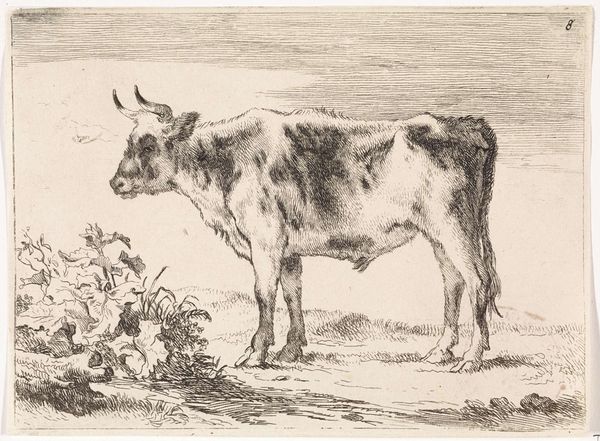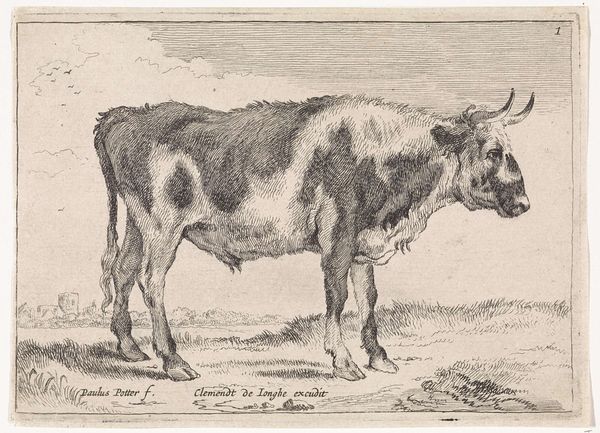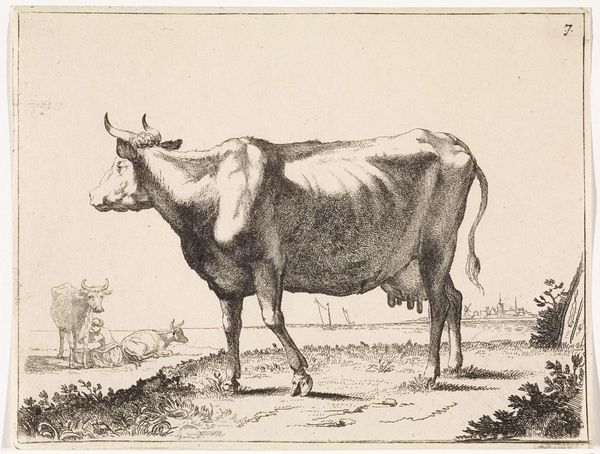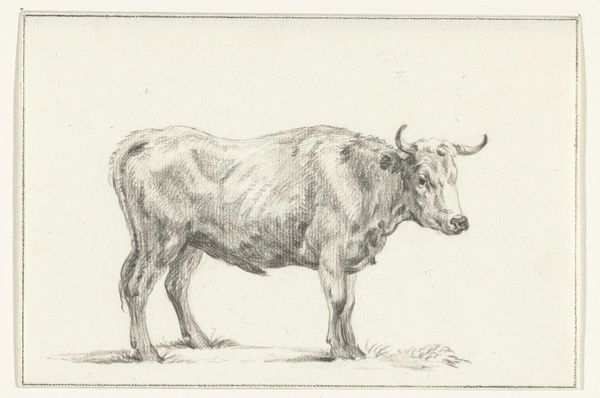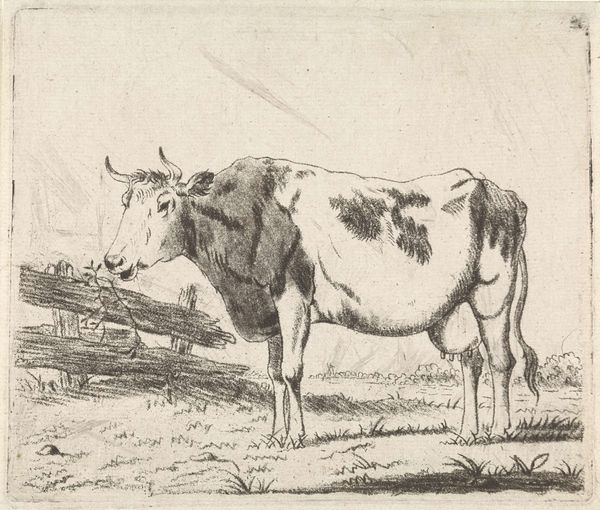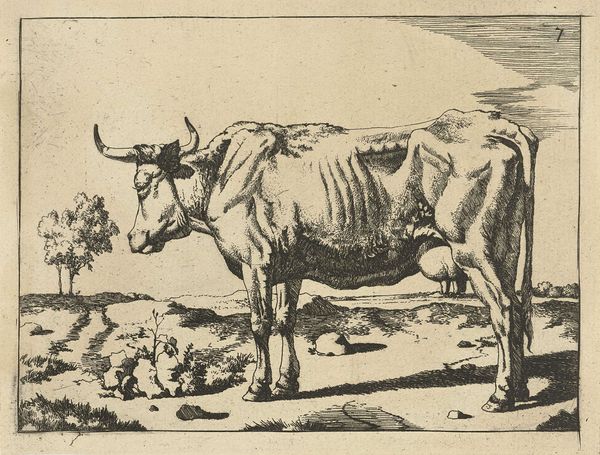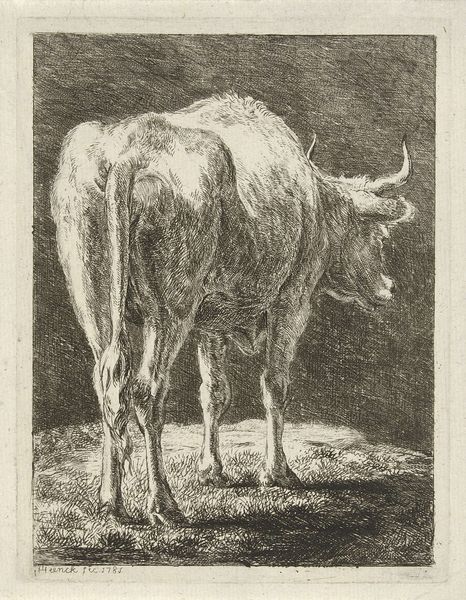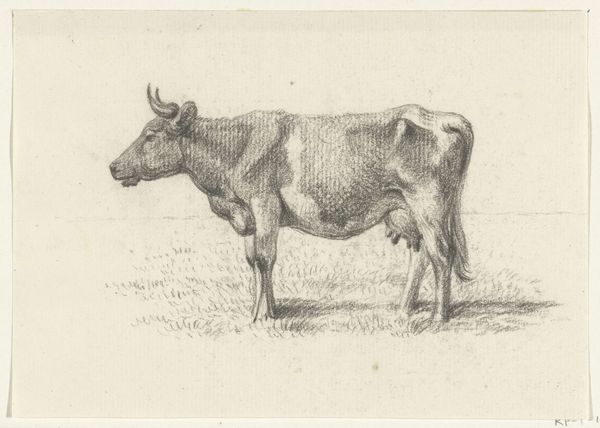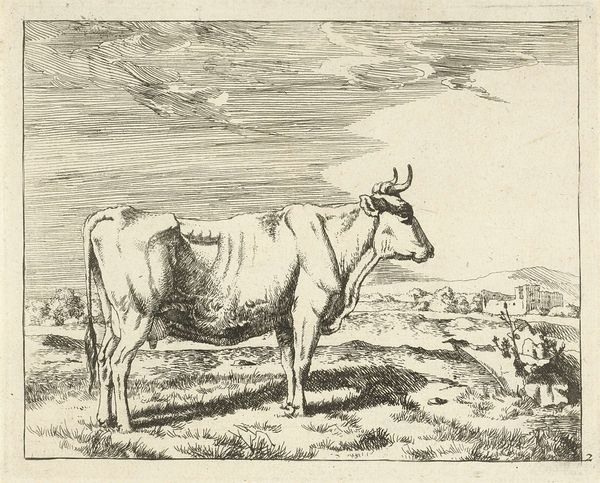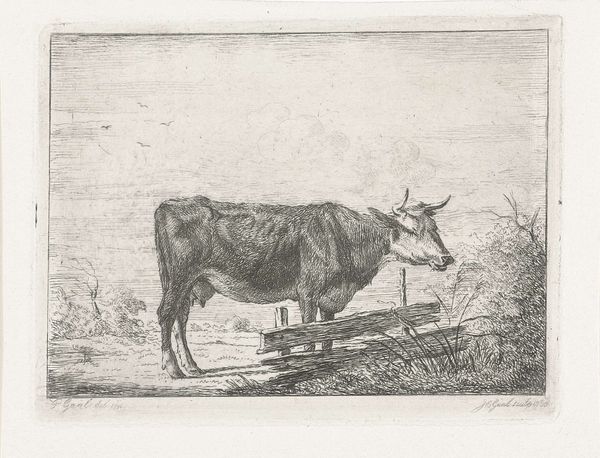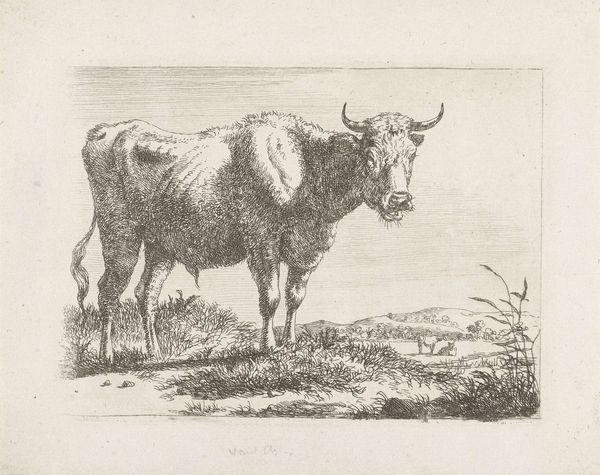
print, etching
#
animal
#
dutch-golden-age
# print
#
etching
#
landscape
#
figuration
#
realism
Dimensions: height 105 mm, width 143 mm
Copyright: Rijks Museum: Open Domain
Curator: Here we have Paulus Potter’s etching, “Standing Cow,” created sometime between 1639 and 1677. Look closely at the rendering. Editor: It's... understated. A solitary cow, really the only subject. Starkly presented in this monochrome landscape. Makes me think about agrarian life, somehow idealized and brutally real at once. Curator: Potter elevates a farm animal to high art, a reflection of the Dutch Golden Age's mercantile success tied inextricably to its agrarian roots. What symbolic weight do you think such an image held for its contemporary viewers? Editor: Well, cattle were more than livestock; they were capital, a visual shorthand for wealth, prosperity, and national identity. The serene pose contrasts with the often harsh realities of animal husbandry, creating a potent symbol. Curator: Exactly! The scale is crucial. Consider how a commonplace animal is blown up, granted gravitas. This emphasizes the nation’s investment and pride. But then, how do we reconcile this with the, frankly, somewhat emaciated condition of the animal? Is this idealized or critique? Editor: That’s what I mean by brutally real. It’s interesting how this tension persists, the ideal and the lived experience existing together. Is there perhaps a visual pun? I mean, "cattle" also can mean possessions in the most basic way? Curator: Possibly. It’s a clever interpretation, fitting nicely into the complex, multifaceted understanding a work like this invites. Editor: A deceptively simple image reflecting on the agricultural prowess of a young nation finding its footing, claiming visual territory. I see power but also some level of melancholy here. Curator: And there’s the continuity of imagery—the echo of ancient pastoral scenes recast for a modern, upwardly mobile society. Potter provides a powerful mirror to that era. Editor: It certainly holds up to scrutiny, this deceptively quiet cow, embodying wealth, health, national pride, and the inherent tension between idealized images and earthly realities. Curator: Indeed, an exceptional piece for appreciating the intricacies of the period's visual lexicon.
Comments
No comments
Be the first to comment and join the conversation on the ultimate creative platform.
